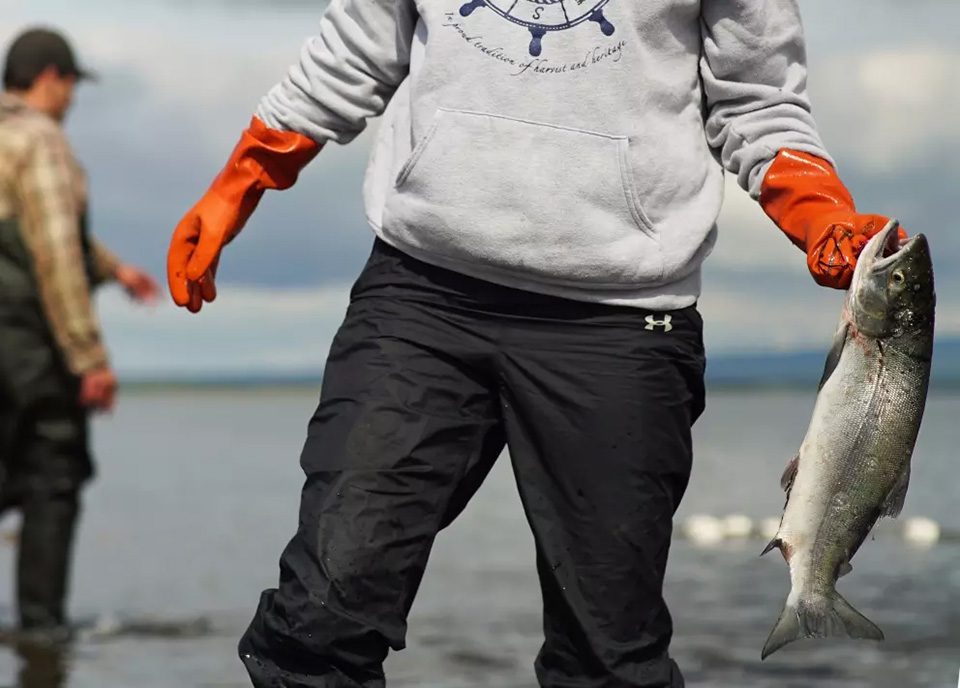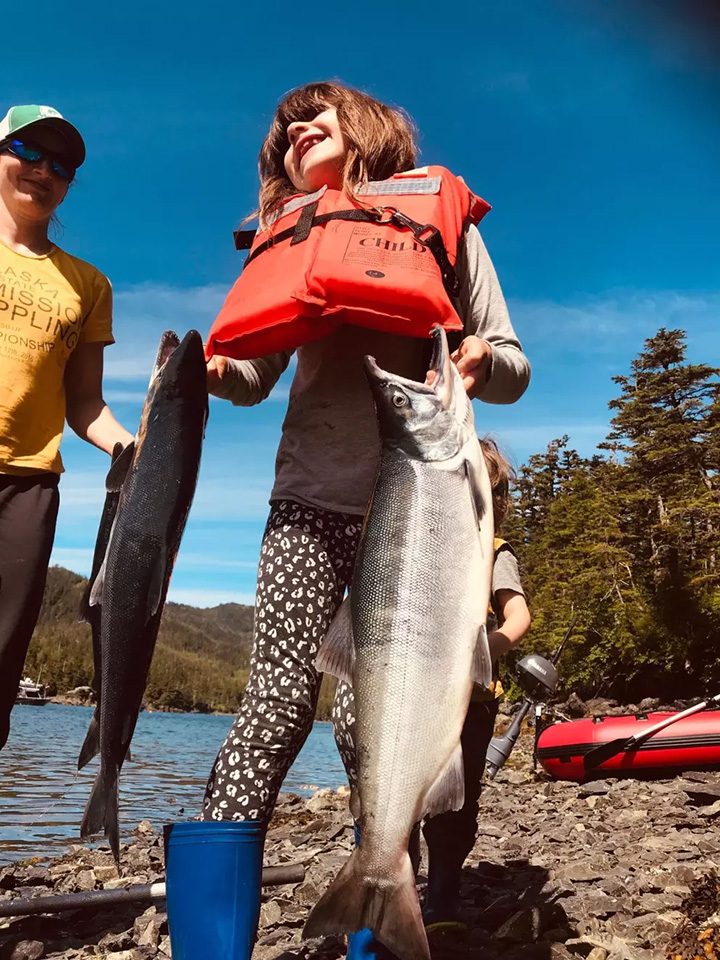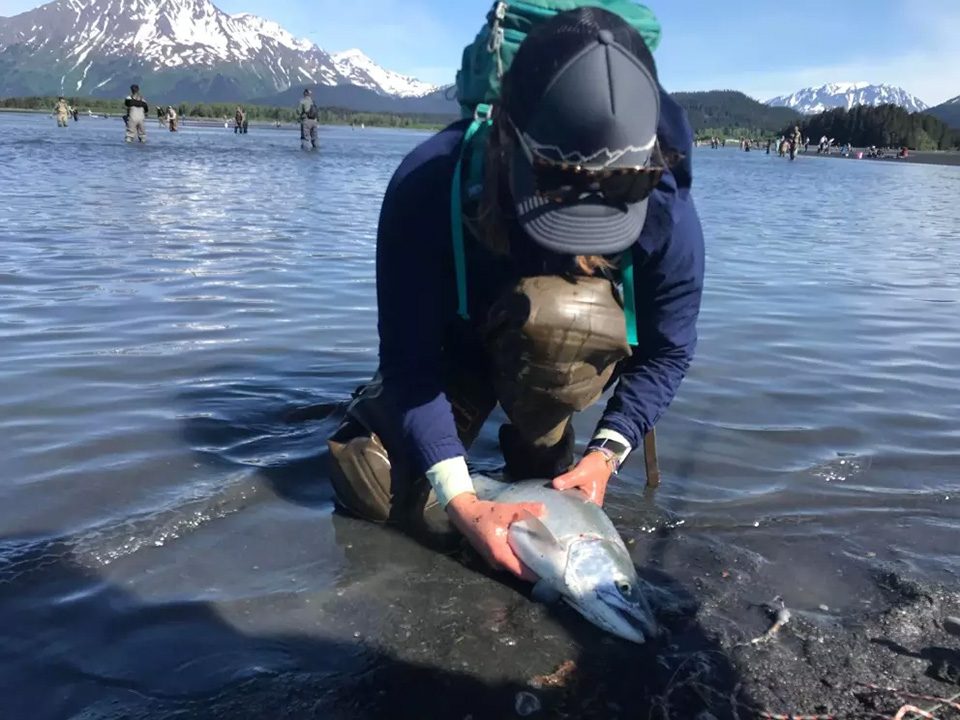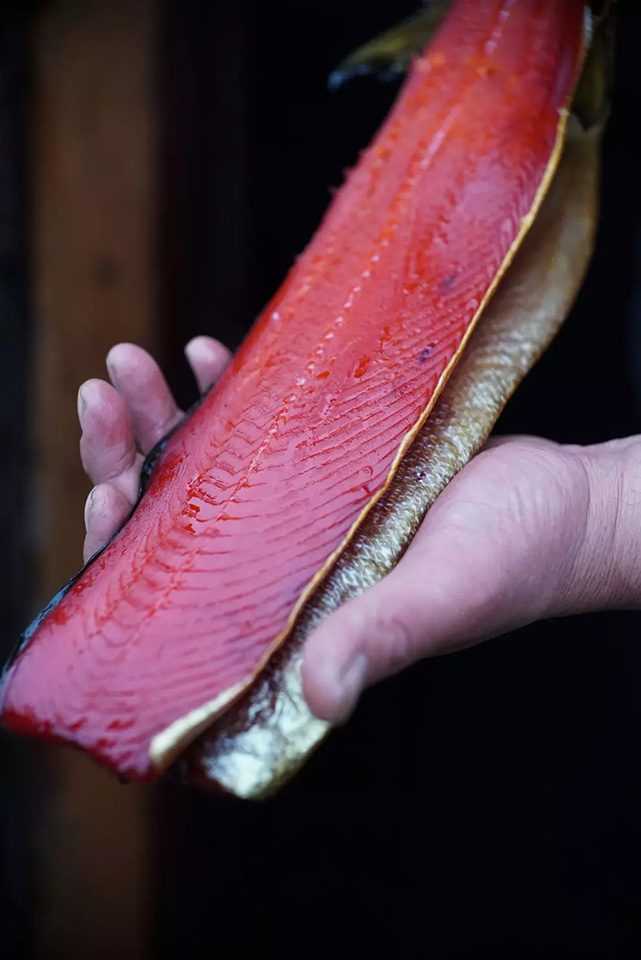
By Katrina Liebich via fws.gov
Arguably, the most iconic fishes in the western states and Alaska, salmon have a long history with humans, as food — but so much more. Fisherwomen and men intercept the five species of Pacific salmon when fresh red fillets underlie chrome-colored skin at sea, and when they return to America’s western rivers to spawn. Chinook, Coho, sockeye, chum, and pink — colloquially known as king, silver, red, dog, and humpy salmon — feed our bodies and souls. They call us to our favorite waters with friends and families for the harvest and meals that follow.

Excitement for camaraderie or perhaps alone time — for the trip itself, the drive, or boat ride, the unknown — the potential compels us. People talk about the catching, but in reality, it’s only a small part of a rich overall experience.

Catching a chrome Chinook or a crimson sockeye compels introspection and respect for the long journeys between rivers and the high seas that salmon are best known for.

All salmon are born in freshwater. Pinks and chums leave quickly for the sea, while sockeyes and cohos may spend as many as three plus years in freshwater before making an arduous journey to feed on an ocean buffet of nutrient-rich prey.
All return to freshwater only once, putting everything they’ve got into their return home. Spawning is their final act before death. Their death is life-affirming: their bodies bring nutrients to aquatic bugs their young will eat and they fertilize stream-side trees that cool the water, and that in their own obsolescence create fish habitat when they come to lay in the water. Since the last glaciation, their migrations have marked time like clockwork.

Fishing for food is also life affirming. Regret may attend the quickly dulling silver sides — a life that began as an egg buried in stones in cold oxygen-rich water ended on your line. A once-living fish is reduced to a fillet on a plate — and not without some work.
Filleting a fish is an art in itself that you get better at with time and practice. Chinook salmon weigh 15 to 30 pounds, sometimes less and sometimes a lot more. The biggest Chinook landed by an angler weighed close to 100 pounds, pulled from Alaska’s Kenai River. Sockeyes are more manageable in the 5 to 8 pound range, pink a little smaller, coho and chum a little bigger.
Their size depends on genetics and how long they’ve spent at sea. A large Chinook is likely an old female that has spent four or five years feeding at sea. The bigger they get the better they position themselves to migrate hundreds — and sometimes a thousand-plus — miles upstream to their freshwater spawning grounds, attracting a healthy mate, and digging a deep redd (nest) that can withstand scouring river flows. The smallest species, pink salmon, spends a single year at sea and has a fixed two-year life cycle.

Then you’re ready for meal prep and whatever that means you —solo dining, inviting friends over, sharing with family or neighbors, and all that goes into that. Everyone and every place has different ways of preparing and sharing the catch. Catching salmon ends in consumption and its history spans thousands of years to present day with the Indigenous peoples of the Pacific Northwest and Alaska to the recreational and commercial fishers from all over the world who come to partake in this amazing bounty.

Cultural traditions center on salmon, a nod to the fact that there’s a lot more than just catching involved. Today, in addition to continued local source of sustenance, the market reach and draw of Pacific salmon is global, with fish harvested from areas such as Alaska’s Copper River and Bristol Bay enjoyed by people all over the world and fishing for wild salmon in Alaska being a bucket list item for many anglers. Long-term geologic forces, and more recently humans, have, and will continue to shape the future of these fish.

Food for Thought
A salmon is more than a red fillet under chrome skin. Coiled in the double helix of their DNA is a lexicon — and language of experience and survival — written by a long journey shaped by geology, humans, and many generations of salmon ancestors. For a salmon, the past is a prelude coded for the future.